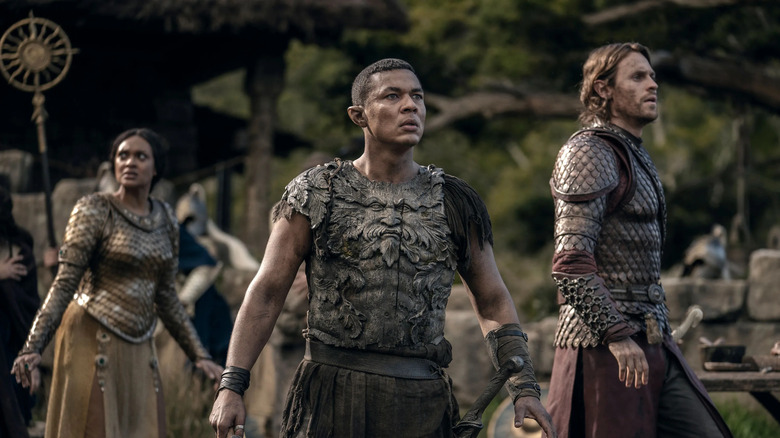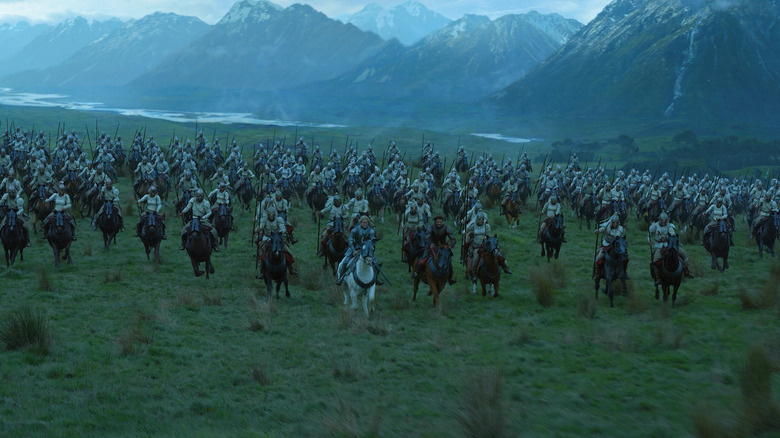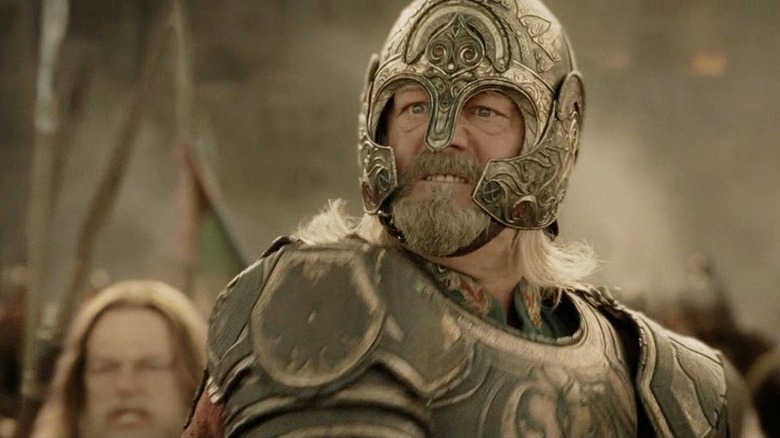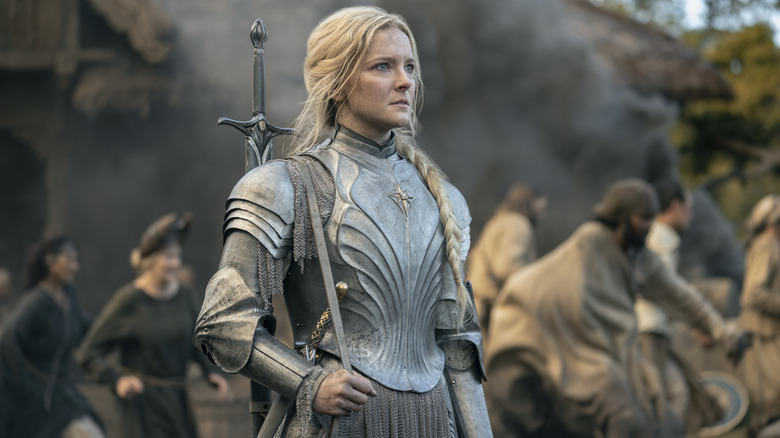The Rings Of Power Carries On A Tradition From The Lord Of The Rings' Best Battles
"The Lord of the Rings" trilogy achieved many things that weren't deemed possible before its release. It delivered one of the greatest fully-digital movie characters of all time, it proved you can do high fantasy in an epic and grounded scale while making a ton of money, it proved you could adapt Tolkien in live-action, it showed that blockbuster cinema could win a ton of Oscars, and it proved that Viggo Mortensen is one of the hottest men in the planet.
But as many achievements as the trilogy has, as much as it changed blockbuster cinema, one thing has remained unmatched since the films came out: their battle scenes. The trilogy has some of the best battle scenes ever put to film, with stunning choreography and cinematography that makes the fights feel real and gritty, a sense of scale that is insurmountable, all while serving the story by delivering character arcs mid-battle while orc heads fly and blood soaks swords.
"The Rings of Power" has managed to evoke many elements from the films in cool ways, from their tone and vibe, the grand vistas, and the elf-dwarf friendships, to the world building and sense of scale and distance.
The latest episode, "Udûn," finally gave us something that the show was missing: a great battle. This is essentially a TV-length successor (predecessor, technically?) to the Battle of Helm's Deep from "The Two Towers," but with the men of the Southlands facing the forces of Adar. The episode takes place over the course of a single night, and mirrors the structure of the epic Helm's Deep siege, including the continuous tradition of a losing battle ending with a deus ex army. Move over, Rohirrim, the Númenóreans are here.
'This shadow is but a small and passing thing'
We begin the battle in the watchtower of Ostirith, a fortified place that could have easily served as a stand-in for the fortress of Hornburg that the people of the Southland could defend against the forces of Adar and his Uruks. Instead we get a cool reversal where Arondir destroys the fortress, killing a bunch of orcs in the process, and allowing the humans to retreat to their village to lay their defences, giving way to a Helm's Deep meets the Scourging of the Shire battle, with civilians being forced to fight using whatever tools they find. What follows is a brutal battle, the darkest and most violent one we've seen in this franchise, one where the humans are forced to do horrible things like killing their friends (after some trickery from Adar), and also get horribly mauled and killed.
It is a rather bleak scene, one that actually goes beyond the coolness of the movies and gets right at the heart of Tolkien's writing: that war is hell and not to be celebrated. After all, the professor witnessed the horrors of war, and saw many of his friends die in horrible ways, so it makes sense to have a battle in Middle-earth feel awful and horrific rather than epic. It is clear the people involved will never be the same, but there is hope, as Bronwyn herself says in her speech that is taken straight out of the "Return of the King" book: "In the end, this shadow is but a small and passing thing. There is light and high beauty, forever beyond its reach."
'Ride to ruin and the world's ending'
Just when everything feels lost, however, we finally see the arrival of Galadriel and the forces of Númenor, who arrive just at the break of dawn and charge as the epic score from Bear McCreary heralds their arrival.
Their arrival is a fantastic mirroring of the arrival of Gandalf and the Rohirrim at first light of the fifth day. This is still one of the coolest shots and sequences in the entire trilogy, from the sight of the Rohirrim charging down the mountain and obliterating the orc army, to the lead-up of Théoden King finally deciding to charge into battle even if it kills him, to the use of light and shadow to signify the arrival of help at the darkest moment. It is a sequence so good not only as an action scene but the culmination of the three-act structure of that battle that it was replicated in "Return of the King" not once, but twice, first with the armies of Rohan arriving at the Battle of the Pelennor Fields, then with Aragorn arriving with the Dead Men of Dunharrow.
Deus ex machina
All of these scenes could easily be campy and cheesy, a moment that's only there to serve as a deus ex machina so our heroes can be saved, and they are, to a point, but they still work. They work because they get at the very devout Catholic heart of Tolkien's writing, that history is just one long tale of darkness and sorrow that will end with a surprising arrival of a savior bathed in white light that will save the day. They work because they serve as emotional catharsis, a respite from the darkness that came before, a moment of triumph and a symbol of empathy and fellowship, as armies of different peoples and cultures come together for the greater good.
Sure, it was still hell, and sure, a volcano exploding right after the "triumphant" victory is going to mess everyone up pretty badly. That being said, it was still a rousing, fist-bump-worthy moment that echoed the best of the "Lord of the Rings" trilogy.



